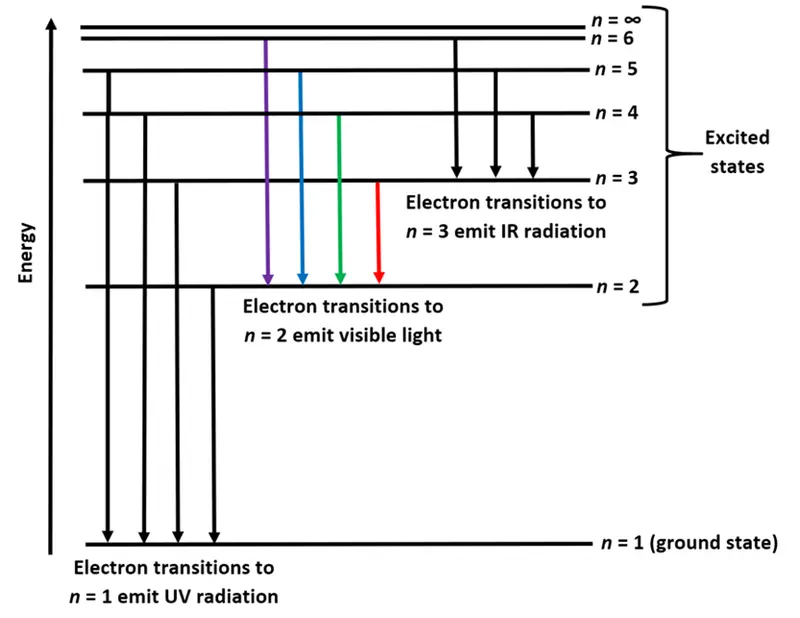Emission Line Spectra of Hydrogen and Energy Transitions
The Emission Line Spectrum of Hydrogen: Evidence for Discrete Energy Levels
- When a pure gaseous element like hydrogen is subjected to high voltage under reduced pressure, it emits light.
- Passing this light through a prism produces a line emission spectrum, a series of distinct lines, each corresponding to a specific wavelength of light.
- Unlike a continuous spectrum, which includes all wavelengths (like a rainbow), the line spectrum has clear gaps. But why do these gaps occur?
Quantization of Energy Levels
- The hydrogen line spectrum arises because electrons in hydrogen atoms can only occupy specific, discrete energy levels.
- When an electron absorbs energy, it "jumps" to a higher energy level (excited state).
- When it falls back to a lower energy level, it releases energy in the form of a photon.
- The energy of this photon corresponds precisely to the difference between the two energy levels.
- Mathematically, the energy of an electron in a hydrogen atom is described by the equation: $$E_n = -R_H \frac{1}{n^2} $$ where:
- $E_n$ = energy of the electron in the $n$-th energy level (in joules, $\text{J}$)
- $R_H = 2.18 \times 10^{-18} \, \text{J}$ (Rydberg constant)
- $n$ = principal quantum number (1, 2, 3, ...)
The negative sign indicates that the energy is relative to the ionized state, where the electron is completely removed from the atom ($n = \infty$).
Analogy- Think of the energy levels like steps on a staircase.
- You can stand on any step, but you can’t hover between them.
- Similarly, electrons can only "stand" on specific energy levels.
Convergence of Lines at Higher Energies
- If you examine the hydrogen spectrum closely, you’ll notice that the lines become closer together (converge) at higher energy levels.
- This convergence occurs because the energy levels themselves get closer as $n$ increases.
- At the limit of convergence, the energy difference between levels approaches zero, corresponding to the ionization of the atom.





